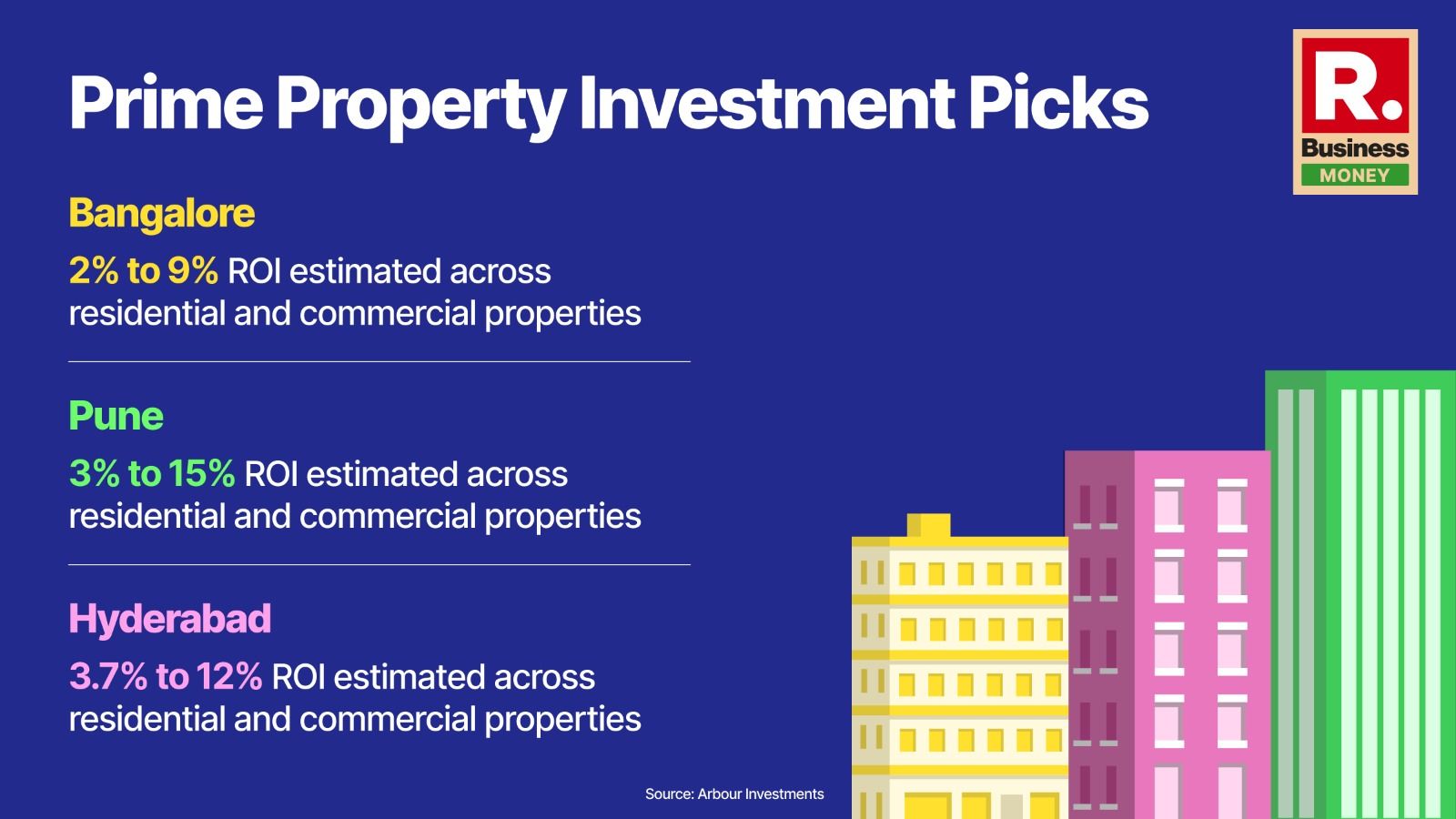Prime picks for property investment: New to the realty market and contemplating where to invest your money in properties? In an exclusive interaction with Republic Business, Chirag Mehta, Founder of Arbour Investments, suggests Bangalore, Pune, and Hyderabad to be the top picks for new investors.
From addressing Bangalore’s perceived saturation to uncovering Pune’s untapped potential and exploring Hyderabad’s high-performing real estate sector, Mehta provides insights into where investors should consider buying property and what returns on investment (ROI) they can expect.

Mehta stressed that choosing the right cities for property investment in India requires careful consideration of various factors such as economic growth prospects, infrastructure development, demand-supply dynamics, regulatory environment, and overall investment climate.
“Property investment requires a thorough understanding of the local market dynamics and macroeconomic factors. It’s not just about finding the cheapest properties; investors need to assess the growth potential and sustainability of their investments,” said Mehta.
Is Bangalore really saturated?
The average return on investment for property investment in Bangalore is estimated to be around 2 per cent to 9 per cent across residential and commercial properties.
According to Mehta, Bangalore has emerged as a prime destination for property investment due to its status as the Silicon Valley of India. The city boasts a robust economy driven by the IT/ITES sector, biotechnology, aerospace, and other knowledge-based industries.
Despite some perceptions of Bangalore being a saturated market, Mehta contends that its cosmopolitan culture, pleasant climate, and comparatively affordable real estate prices compared to other metro cities render it an attractive option for both investors and homebuyers.
Pune’s property potential: Untapped?
The average return on investment for property investment in Pune is estimated to be around 3 per cent to 15 per cent across residential and commercial properties.
“Pune’s steady growth in real estate demand, coupled with its favourable business environment and lower operational costs, make it an enticing prospect for investors seeking long-term returns,” Mehta added.
“Pune has witnessed steady growth in real estate demand due to factors like job opportunities, educational institutions, and infrastructure development, with the expansion of IT/ITES companies and the automotive sector further attracting investors seeking rental income and capital appreciation,” Mehta further said.
Hyderabad beats national average
Hyderabad’s strategic location, proactive government policies, and investments in infrastructure have fuelled its economic growth. Hyderabad offers relatively affordable real estate prices compared to other major cities, further enhancing its appeal for investors.
The average return on investment for property investment in Pune is estimated to be around 3.7 per cent to 12 per cent across residential and commercial properties.
“The city offers a rental yield of 3.7 per cent, higher than the national average, and has seen a 6 per cent year-on-year (YoY) increase in property prices,” Mehta added.

Essential metrics to check
Providing novice investors with a roadmap for realty success, Mehta stressed the importance of statistical indicators and metrics crucial for first time investors to analyse before making their inaugural real estate investment.
“For the novice investor, it is paramount to dissect the statistical indicators before taking the plunge,” Mehta said. He highlighted key indicators such as location analysis, market trends, property valuation, rental yield, capital growth rate, cash flow analysis, loan-to-value ratio, financing options, exit strategies, and risk assessment.
Mehta stressed the importance of studying demographics, employment rates, and infrastructure development to gauge a location’s potential for growth. “A flourishing location with growing job opportunities, schools, hospitals, and good connectivity augurs well for property values,” he explained.
Analysing historical and current market trends, including property prices, rental rates, vacancy rates, and inventory levels, enables investors to identify opportunities and risks. Mehta underscored the importance of assessing the fair market value of a property for various purposes such as taxation, financing, and investment analysis. “Understanding market dynamics helps investors identify potential opportunities and risks,” he added.
Calculating the annual rental income against the property’s market value helps investors determine the investment’s potential profitability, according to Mehta. “Positive cash flow is key,” he emphasised. Mehta advised investors to consider potential exit strategies such as selling the property, refinancing, or renting it out to maximise returns and mitigate risks.
Strategies for maximising success
He also provided strategies for maximising success, particularly for novices, which revolve around due diligence, market understanding, and patience. Mehta encouraged investors to start small, focus on residential properties, prioritise research and education, network with industry professionals, seek professional advice, maintain a long-term perspective, and conduct comprehensive due diligence.
Revealing realty’s reality: Key trends to know
According to Mehta, the residential sector is experiencing a robust rebound, boasting average annual ROIs of 6-8 per cent across major cities. However, he highlighted that ROI variations exist based on location and property type, with metropolitan areas such as Mumbai and Bangalore showcasing significant differences driven by factors like locality and infrastructural developments.
Commercial real estate, especially premium office spaces, is witnessing yields of about 6-8 per cent, driven by steady demand from businesses. Mehta also pointed out the growth in the warehousing and industrial segments, with ROIs ranging from 10 per cent to 16 per cent, fuelled by the e-commerce boom and expansion in the manufacturing sector.
Innovative financial instruments such as Secured Unlisted Debt Instruments, particularly high yield secured bonds, were highlighted by Mehta for offering total returns of 16 per cent to 19 per cent and yields of 10 per cent to 12 per cent. He stressed the need for careful due diligence due to their less liquid nature and potential volatility.
Mehta also discussed the introduction of Real Estate Investment Trusts (REITs) in India, which blend real estate’s tangible benefits with stock market liquidity. He mentioned promising returns of 7-10 per cent annually with dividend yields of 6-8 per cent.
















